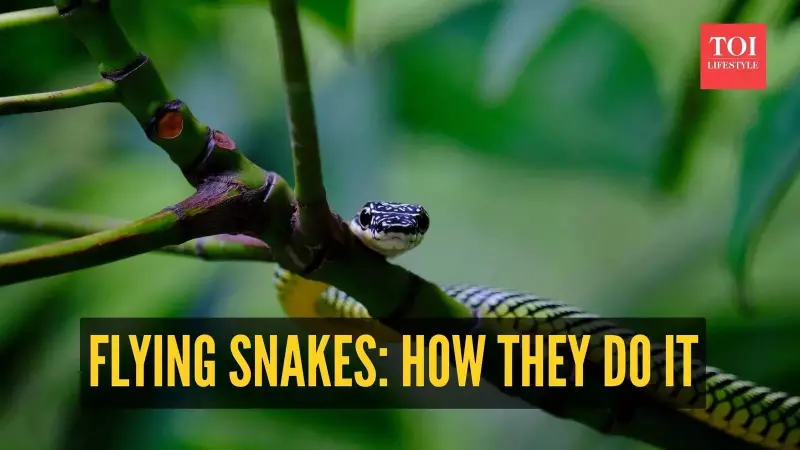
Imagine looking up at the canopy of Southeast Asian forests and witnessing what seems impossible: snakes flying through the air. This isn't fantasy or folklore—it's the remarkable reality of paradise tree snakes, nature's most unexpected aviators.
The Aerial Acrobats of the Animal Kingdom
Researchers have been studying these gravity-defying reptiles for years, and their findings continue to astonish. The paradise tree snake (Chrysopelea paradisi) doesn't just fall gracefully—it actively glides, controlling its direction and distance with precision that rivals some flying animals.
How Do They Defy Gravity?
The secret lies in a breathtaking transformation. When a paradise tree snake launches itself from a branch, it performs an immediate body makeover:
- Rib expansion: The snake flattens its body by spreading its ribs outward, creating a concave surface that acts like a wing
- Undulating motion: Unlike static gliders, these snakes create wave-like movements that provide stability and control
- Aerodynamic positioning: They maintain an optimal angle of attack to maximize lift and distance
The Science Behind the Glide
Recent studies using high-speed cameras and motion capture technology have revealed even more sophisticated mechanics. The snakes don't just fall—they generate genuine aerodynamic lift, similar to how an airplane wing functions.
"What's most remarkable is how they convert their entire body into a flight surface," explains Dr. Jake Socha, who has studied these snakes for over two decades. "They're essentially turning themselves into a living, moving wing."
Impressive Flight Capabilities
- Distance: These snakes can glide horizontally up to 100 feet from a 50-foot launch point
- Maneuverability: They can make mid-air turns of up to 90 degrees to avoid obstacles
- Control: They can even change their glide path to target specific landing sites
Why Evolution Created Flying Snakes
This extraordinary ability serves multiple survival purposes in their dense forest habitats:
- Escape predators quickly by moving between trees without descending to the ground
- Hunt more efficiently by accessing prey across canopy gaps
- Conserve energy compared to climbing down and up adjacent trees
The paradise tree snake's aerial abilities represent one of evolution's most creative solutions to arboreal living. Their gliding capability demonstrates how animals can develop extraordinary adaptations to thrive in specific environments.
Inspiring Human Technology
Beyond their biological wonder, flying snakes are inspiring robotics and aerospace engineering. Researchers are studying their unique locomotion to develop:
- Search-and-rescue robots that can navigate complex terrain
- New drone designs with enhanced maneuverability
- Advanced understanding of fluid dynamics and aerial locomotion
Next time you're in the forests of Southeast Asia, look up—you might just witness one of nature's most spectacular displays of evolutionary innovation, as these remarkable reptiles turn the sky into their personal highway.





